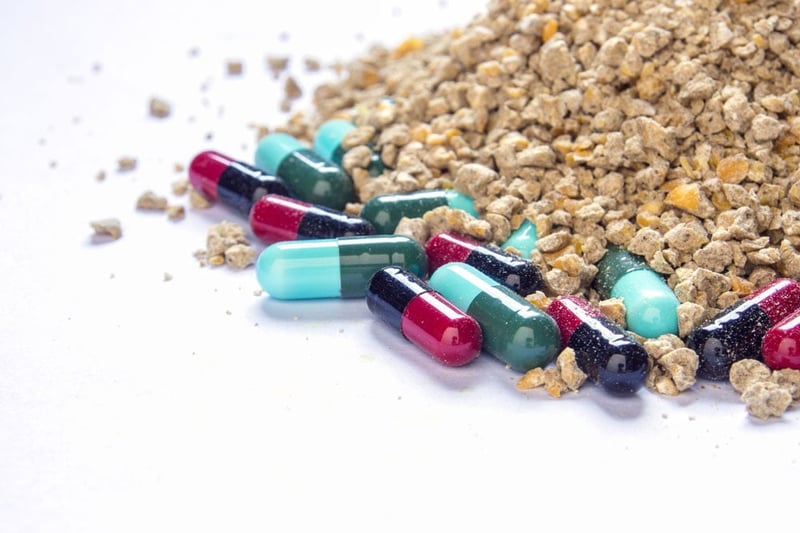
The Growing Threat of AMR in Animal Welfare: Understanding the Risks
Blog
Antimicrobial resistance (AMR) is a significant and growing threat in the realm of animal welfare. It represents the ability of microorganisms like bacteria, viruses, and some parasites to stop an antimicrobial, such as antibiotics, from working against it.
As a result, standard treatments become ineffective, infections persist, and the risk of spread to others increases. This phenomenon poses a substantial threat to animal health, food safety, and public health.
The Science Behind AMR
Understanding How AMR Develops
Antimicrobial resistance occurs through the natural process of mutation in microorganisms. When animals are exposed to antimicrobials, sensitive bacteria are killed, but resistant germs may survive and multiply. This is exacerbated by the misuse and overuse of antimicrobials in animals, leading to more opportunities for resistance to develop and spread.
The Role of Genetics in AMR
Genetic factors play a crucial role in the development of AMR. Bacteria can acquire resistance genes from other resistant bacteria, further speeding up the spread of AMR. This transfer of genetic material can happen through various mechanisms, like conjugation, transformation, or transduction.
AMR's Impact on Animal Health
Consequences of AMR in Livestock
In livestock, AMR can lead to treatment failures, increased mortality, and reduced productivity. It complicates the management of infectious diseases in farm animals, impacting food security and livelihoods of farmers.
AMR in Companion Animals
Companion animals are not immune to the effects of AMR. The rise of resistant infections in pets like dogs and cats poses a challenge to veterinary medicine, leading to fewer treatment options and higher medical costs.
Human Health Implications
The Zoonotic Aspect of AMR
AMR in animals has a direct impact on human health through the zoonotic transmission of resistant bacteria. This occurs when humans come into contact with resistant bacteria from animals, either through direct contact or through the consumption of animal products.
The Global Health Perspective
The World Health Organization recognizes AMR as one of the top ten global public health threats. It has the potential to undermine progress in health and development, making it a concern that transcends national borders.
Strategies to Combat AMR in Animal Welfare
Responsible Use of Antimicrobials
Promoting the responsible use of antimicrobials in veterinary medicine is crucial. This includes using antimicrobials judiciously, only when necessary, and under the guidance of a qualified veterinarian.
Enhancing Surveillance and Monitoring
Enhanced surveillance and monitoring systems are essential to track the emergence and spread of AMR in animal populations. This helps in early detection and facilitates prompt action to contain resistant strains.
Fostering Research and Development
Investing in research to understand the mechanisms of AMR and to develop new antimicrobials and alternative treatments is vital. This also involves encouraging innovation in diagnostic tools and vaccines.
The Role of Policy and Regulation
Implementing Strong Regulatory Frameworks
Strong regulatory frameworks are necessary to control the use of antimicrobials in animals. Policies should enforce prescription-only use of critical antimicrobials and promote best practices in animal husbandry.
International Collaboration
Given the global nature of AMR, international collaboration is critical. Sharing data, resources, and strategies across borders can help in the effective management of AMR risks.
Conclusion
The threat of antimicrobial resistance in animal welfare is a complex and evolving challenge. It requires a multifaceted approach involving responsible use of antimicrobials, enhanced surveillance, research, and strong regulatory frameworks. By addressing AMR proactively, we can safeguard animal health, protect human health, and ensure a sustainable future.
FAQs
Q1: What is AMR and why is it a concern in animal welfare?: AMR, or Antimicrobial Resistance, is the resistance of microorganisms to antimicrobials. In animal welfare, it poses a threat to animal health, food safety, and human health due to ineffective treatments and the spread of resistant infections.
Q2: How does antimicrobial resistance develop in animals?: AMR develops through mutations in microorganisms and is exacerbated by the misuse and overuse of antimicrobials in animals. Resistant bacteria can survive treatments and multiply.
Q3: Can AMR in animals affect human health?: Yes, AMR in animals can impact human health through the zoonotic transmission of resistant bacteria, either directly or through the consumption of animal products.
Q4: What strategies can be used to combat AMR in animal welfare?: Strategies include the responsible use of antimicrobials, enhanced surveillance and monitoring, fostering research and development, and implementing strong regulatory frameworks.